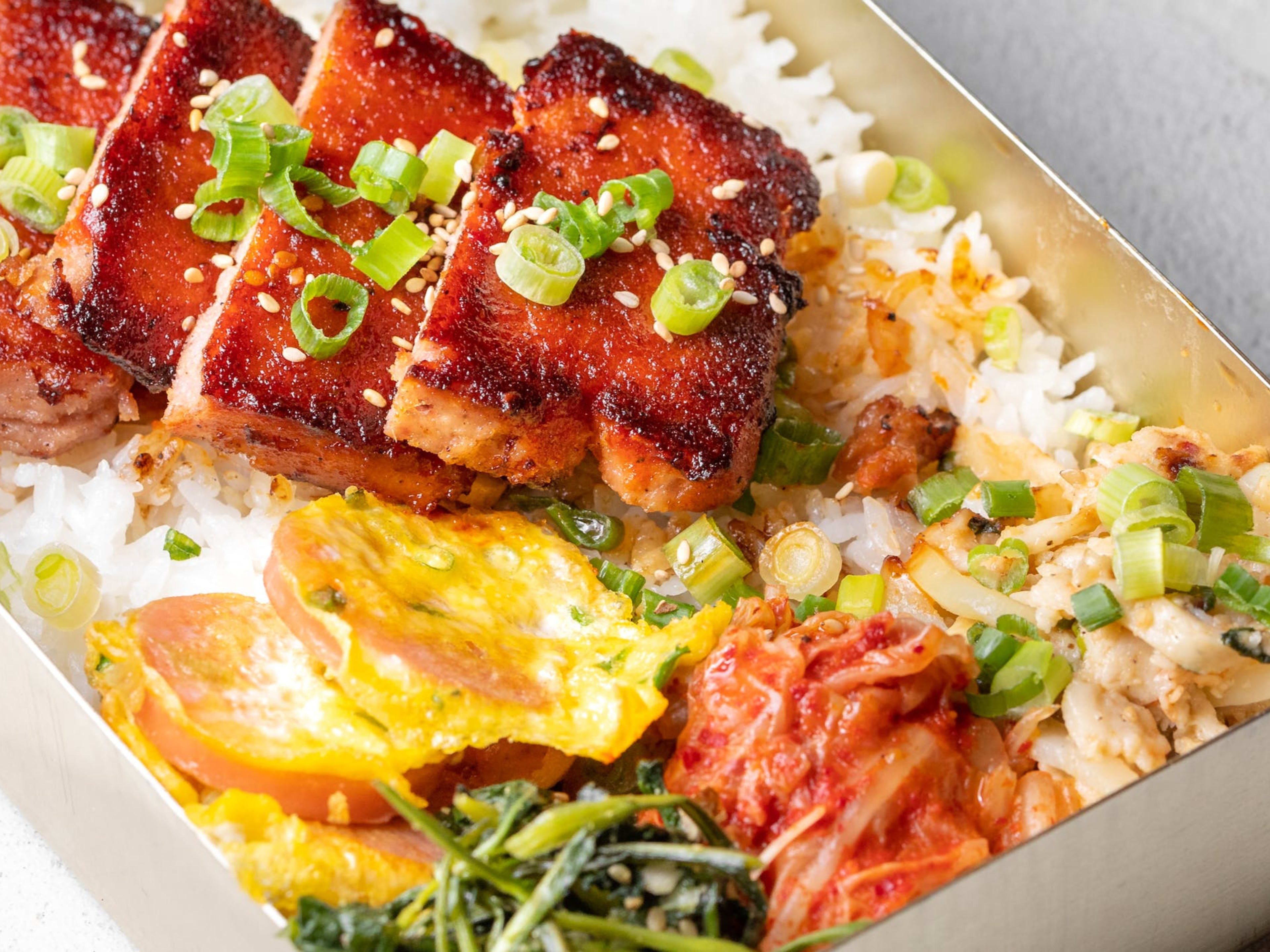LAReview
photo credit: Jakob Layman
Shiku
Included In
Shiku in the Grand Central Market is a Korean spot from the people behind Baroo that serves a mix of recognizable comfort dishes, like kimchi pork belly and doenjang-marinated chicken, and creative banchan, like spicy kimchi corn or japchae made with seaweed. The best way to try a little of everything is to order their rice boxes that come with sides of the daily banchan. But don't overlook the Korean fried chicken or crispy mandu—you might need that extra snack at 3pm.
photo credit: Jakob Layman
Food Rundown
photo credit: Jakob Layman
LA Galbi
Inspired by the packed lunches of Korean school children, the kalbi dosirak is a well-rounded meal perfect for a quick lunch or eating on-the-go. Braised short ribs are sliced nice and thick, made mouthwateringly juicy, the result of lots and lots of marbling. Depending on whether you inhale it there or not (basically, if there’s travel involved), the presentation might not be 100%. But you won’t even care because the meat is so freaking tender, all but falling off the bone.
photo credit: Jakob Layman
Maekjuk Chicken
The leaner, poultry option - if red meat isn’t your thing. This is our favorite dish on the menu because, unlike our relationship with our therapist, it’s actually quite simple. One of Korea’s oldest recipes (marinated pork grilled over an open flame) is ushered into modernity, opting for succulent chicken breasts glazed with fermented soybean paste. So flavorful, so moist! A vaguely nutty soybean powder coats the chicken, making for big, savory, smoky bites. Paired with a bed of white rice and three daily banchans, name a more iconic trio. You can’t.
photo credit: Jakob Layman
Kimchi-Braised Pork Belly
This might just be an ill of the takeout system, but pork belly really doesn’t travel well. Unless you literally crack your plate open as soon as you get it, the meat tends to get a bit soggy on the journey home. Which is a shame, because the pork itself is nicely seasoned, composed of equal parts fat and meat which are flavored with a bit of pepper.
Temple Tangsu (Vegan)
Incredible side dish. Think Kentucky Fried Chicken popcorn chicken, but even lighter, filled with mushrooms, and, uh checks notes not made with mutant mystery meat. The batter is crispy and lightweight, the ideal complement to the shiitake mushrooms’ earthy flavors. Plus, it’s just fun to pop one in your mouth and crunch away. Save leftovers for a rainy day, toss them into the toaster oven, then put on a fun video (may we suggest Olympic fails?)
photo credit: Jakob Layman
Banchan
Flipping through Shiku’s seasonally rotating banchan menu is like being a kid in a candy store - but instead of lollipops and whatever “chocolate” Tootsie Rolls are made of, it’s filled with stir-fried squid, radish salads, and wild mountain greens. Get a few, so you can feel like a wise, ancient store owner at an apothecary shop whenever you reach into the fridge to grab their crackling myulchi saewoo bokkeum, a dried shrimp and anchovy mix that’s great for a snack or sprinkling over a salad.
